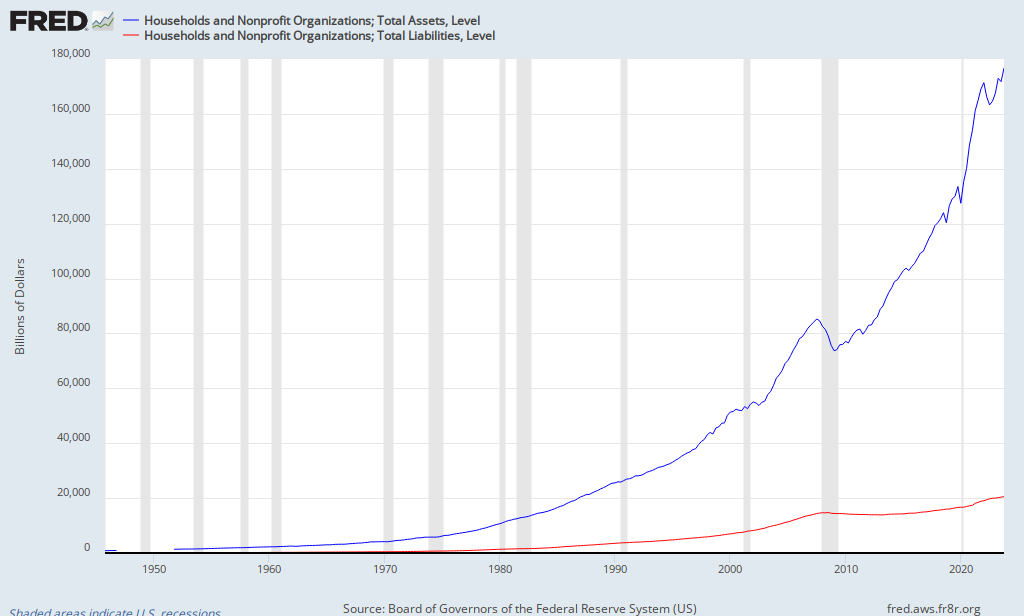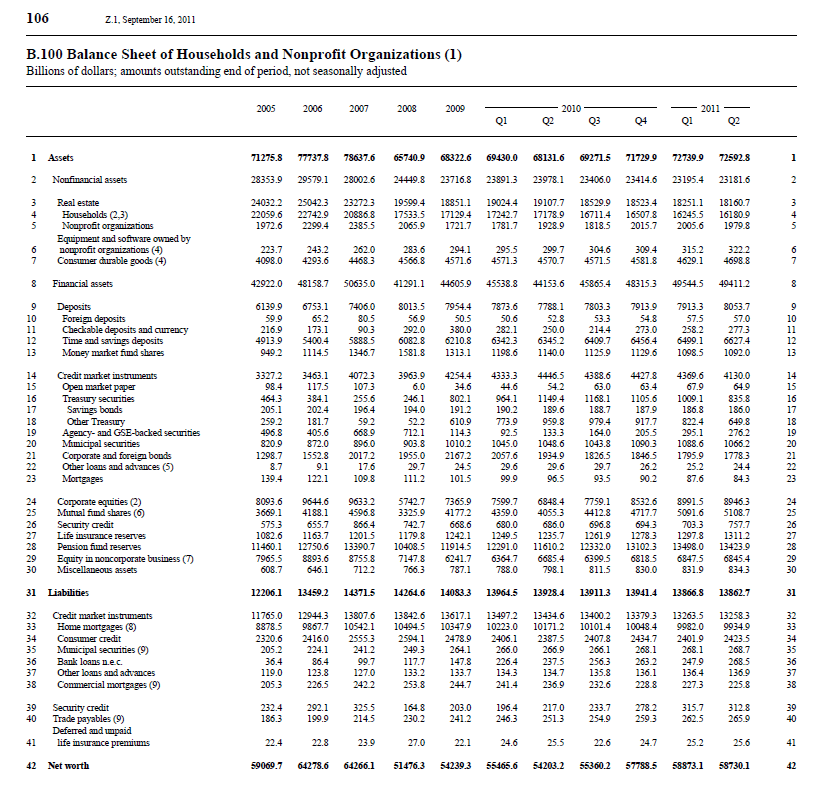WillowTree
Diamond Member
- Sep 15, 2008
- 84,532
- 16,091
- 2,180
On Wednesday, the federal government's total debt exceeded fifteen trillion dollars. That's $48,000 in debt per citizen and over $133,000 in debt per taxpayer. Adding in all U.S. debt, including personal (mortgages, credit cards, student loans), plus government at all levels, the debt is approaching an incomprehensible $55 trillion, representing almost $661,000 per American family.
If you want to see just how literally big these numbers are, take a look at this screen shot from USDebtClock.org taken a couple of seconds after the fateful $15 trillion national debt was reached.
U.S. National Debt Clock : Real Time
The American Spectator : $15 Trillion and Counting
If you want to see just how literally big these numbers are, take a look at this screen shot from USDebtClock.org taken a couple of seconds after the fateful $15 trillion national debt was reached.
U.S. National Debt Clock : Real Time
The American Spectator : $15 Trillion and Counting




